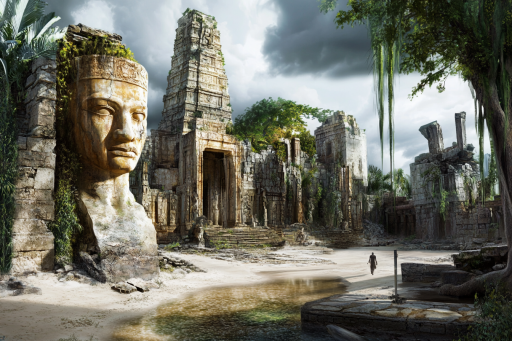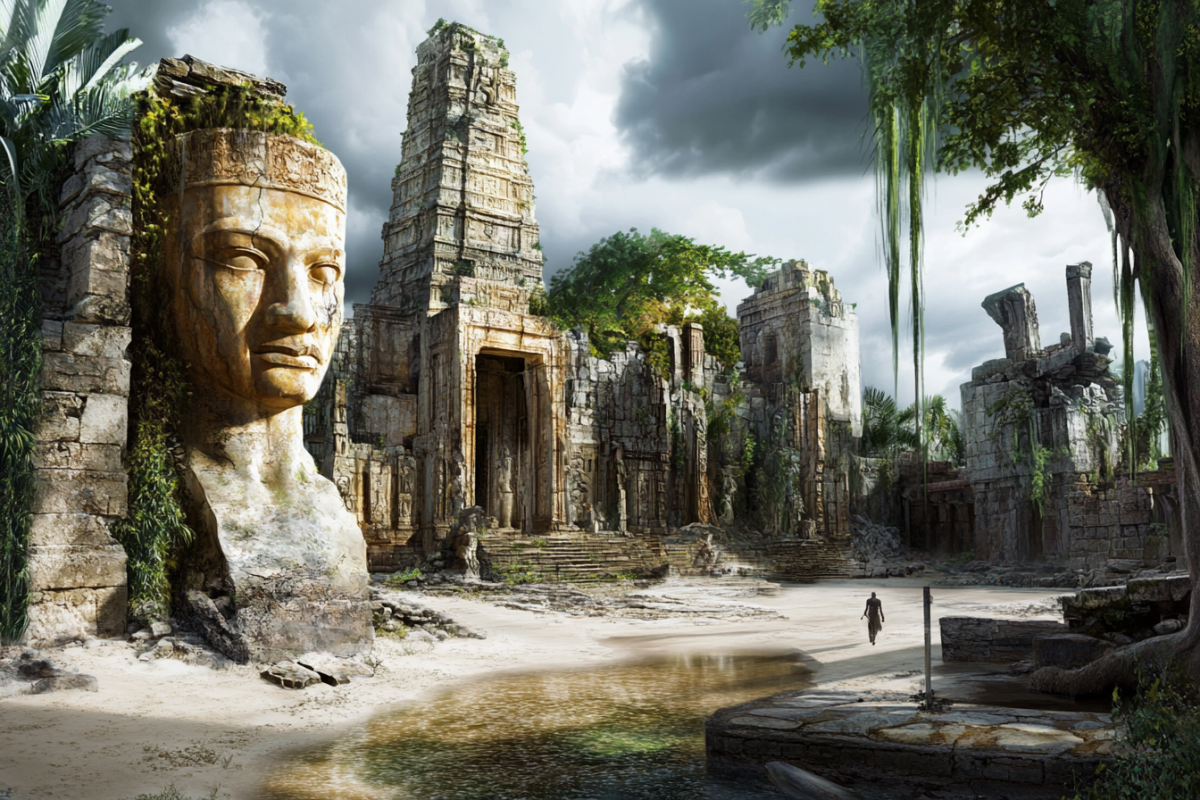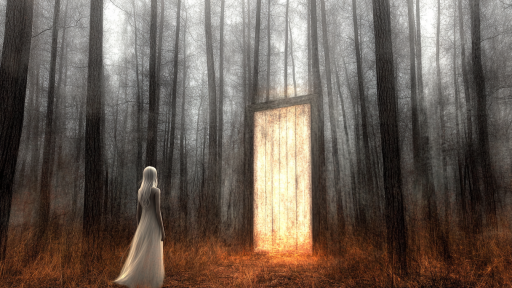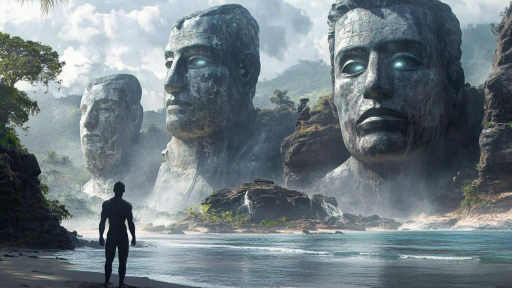
Throughout history, great civilizations have risen to power—only to vanish without a trace. These cultures built monumental cities, mastered complex technologies, and left behind cryptic clues of their existence. Yet, despite their achievements, they disappeared into the sands of time, leaving modern researchers puzzled. What caused these mighty societies to fall into silence, and how much of their legacy remains buried, waiting to be uncovered?
The Indus Valley Civilization

Once thriving along the banks of the Indus River, this ancient civilization was as advanced as Egypt or Mesopotamia, boasting urban planning, sewage systems, and standardized weights. Yet it mysteriously vanished, its cities abandoned, and its script still undeciphered. Theories range from climate change to invasion, but no conclusive evidence explains why it faded into obscurity.
The Nabataeans of Petra

Known for carving stunning rose-red structures into sandstone cliffs, the Nabataeans created a flourishing desert kingdom in what is now Jordan. Despite their architectural genius and control of major trade routes, they disappeared from history. Their sudden decline is still debated—was it Roman absorption, water scarcity, or something stranger?
The Olmec Civilization

Regarded as the “mother culture” of Mesoamerica, the Olmecs left behind giant stone heads and intricate artifacts—but few clues about their identity. Their mysterious disappearance predates even the Maya, and no one knows why their once-flourishing society dissolved. Did internal strife, environmental change, or external forces erase their legacy?
The Ancestral Puebloans

Also known as the Anasazi, these master builders of the American Southwest crafted vast cliff dwellings and intricate roadways. Then, they vanished, leaving behind empty stone cities and shattered pottery. Drought, war, or spiritual reasons may have driven them away, but their fate remains one of North America’s greatest mysteries.
The Khmer Empire

Famed for constructing Angkor Wat, the Khmer Empire ruled a vast territory in Southeast Asia. But sometime in the 15th century, their mighty cities were overtaken by jungle. Was it war, shifting trade routes, or environmental collapse that ended this once-mighty empire?
The Kingdom of Aksum

Once a powerful trading hub connecting Africa, Arabia, and Asia, Aksum was home to monumental obelisks and early Christian kings. It vanished from prominence in the 7th century, its decline veiled in mystery. Some point to changing trade dynamics or religious conflict, but no definitive cause has been uncovered.
The Minoans of Crete

Europe’s first great civilization, the Minoans left behind palaces like Knossos, rich art, and undeciphered scripts. Then, they disappeared, possibly due to a volcanic eruption, tsunami, or invasion. Their peaceful society still challenges assumptions about ancient power structures.
The Sanxingdui Civilization

Discovered in China in the 20th century, Sanxingdui stunned archaeologists with its alien-looking masks and advanced bronze work. Little is known about this enigmatic society, which suddenly vanished without written records. Did they migrate, collapse, or integrate into another lost culture?
The Mississippian Culture

Centered around Cahokia, near modern-day St. Louis, this North American civilization built massive mounds and had a population rivaling medieval London. But by the 1400s, the site was abandoned. Disease, warfare, or societal collapse may have played a role—but no one knows for sure.
The Hittite Empire

Once rivals to Egypt and Babylon, the Hittites ruled much of Anatolia with advanced laws and military might. Their capital, Hattusa, was suddenly deserted, and their records fell silent. Earthquakes, invasions, or a broader Bronze Age collapse may have brought them down.
The Lycians of Anatolia

These mysterious seafarers built tombs into cliffs and developed a unique confederated political system. Though referenced by ancient Greeks, their culture disappeared, leaving only stone ruins and undeciphered language fragments. Did they merge with other groups or fall victim to conquest?
The Chachapoya – Cloud People of Peru

Living high in the Andes, the Chachapoya built cliffside fortresses and mummified their dead in caves. Eventually conquered by the Inca, their traditions and cities faded rapidly after Spanish contact. The jungle has swallowed much of their history, leaving behind eerie remnants in the clouds.
The Tartessians of Iberia

Said to have lived at the edge of the known world, the Tartessians were rich in gold and trade, influencing early Greek myths. But they seemingly disappeared without a trace, their cities and language lost to time. Some believe they may be linked to the legend of Atlantis.
The Wari Civilization

Predating the Inca, the Wari built complex urban centers and developed early road systems in the Andes. Their influence stretched far, but their society suddenly fragmented. The reasons remain unclear—climate shifts, societal stress, or a silent transformation into another culture?
The Sogdian Traders

Renowned Silk Road merchants, the Sogdians thrived in Central Asia and spread cultural influences across continents. Yet after Islamic conquest and shifting trade, their identity slowly dissolved. Today, only fragmentary texts and ruins mark their existence, raising questions about cultural extinction.
Echoes of Forgotten Empires

Civilizations rise, flourish, and sometimes vanish, taking their knowledge, stories, and mysteries with them. What caused their downfall—natural disasters, wars, cultural shifts, or something beyond our understanding? As we unearth ruins and decipher symbols, we inch closer to the truth, but some answers may always remain buried. Perhaps these disappearances are not just puzzles of the past—but warnings for the future.





